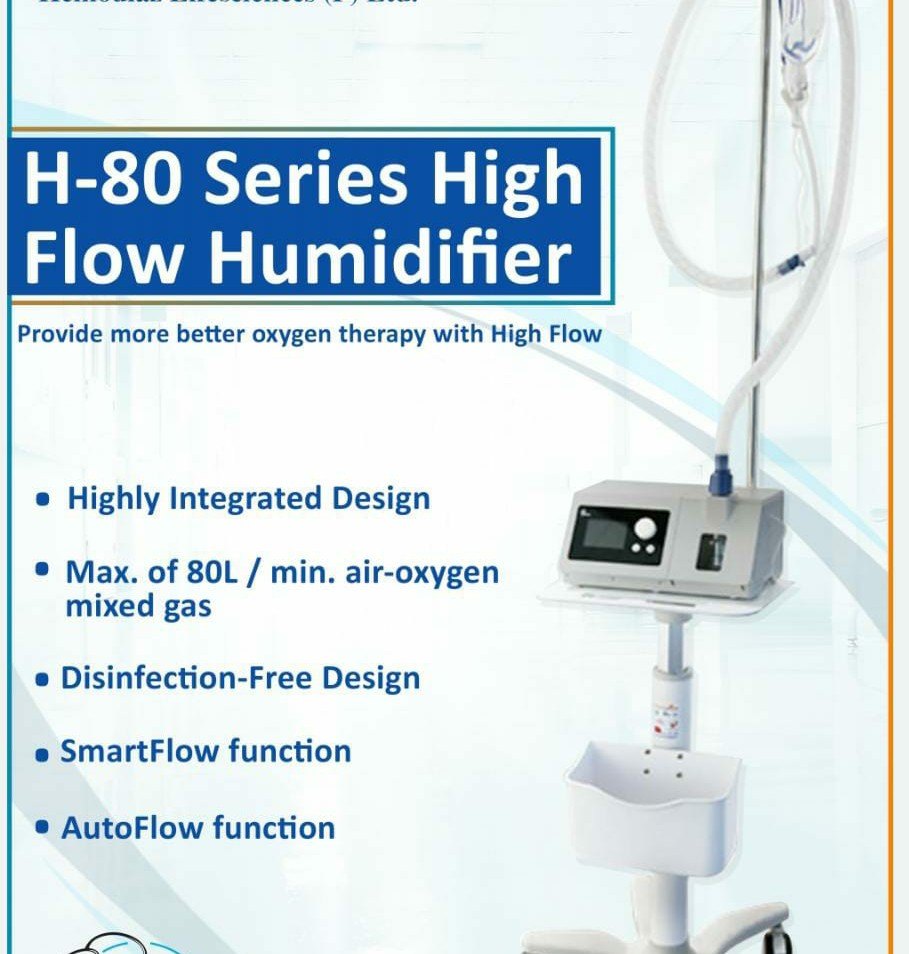HIGH FLOW HUMIDIFIER (HFNC): The high flows and humidification improve functional residual capacity and mucocililary clearance of secretions thereby reducing work of breathing. The high flows may also affect pulmonary and systemic circulation which is an important consideration when applying HFNP therapy to children with cardiac disease.A high-flow nasal cannula accomplishes a reduction of nasopharyngeal airway resistance, leading to improved ventilation and oxygenation through the application of a positive pressure environment.
The beneficial effects of HFNC include the following: delivery of high flow, better matching of patients’ peak inspiratory flow, and finally enabling the implementation of FiO 2 setting, providing a small amount of positive pressure in the airway to increase end-expiratory lung volume, flushing of nasopharyngeal dead.
Increased humidification results in increased water content in mucous, which can facilitate secretion removal and may also decrease the work of breathing and avoid airway desiccation and epithelial injury.
A high-flow nasal cannula accomplishes a reduction of nasopharyngeal airway resistance, leading to improved ventilation and oxygenation through the application of a positive pressure environment. The resistance of an airway follows the Hagen–Poiseuille law and is calculated as: R = 8nl / 3.14 r4.
Humidifiers help by soothing the tissue in your nose and throat. In turn, they can help relieve common symptoms like a dry, itchy throat, and runny nose. However, keeping a perfect humidity balance is key. Too much humidity can cause dust mites and mold to spread, which can also worsen allergies and asthma.
Hypoxic respiratory failure, e.g.:
- Community-acquired pneumonia.
- Viral pneumonia (e.g. influenza)
- Acute asthma.
- Cardiogenic pulmonary edema.
- Pulmonary embolism.
- Interstitial pneumonia.
- Carbon monoxide poisoning.
An HFNC device consists of an air/oxygen blender connected through an active heated humidifier to a nasal cannula. HFNC oxygen therapy can deliver flow of up to 60 L min−1 of gas that is heated and up to 100% humidity at a controlled concentration of oxygen (fraction of inspired oxygen: 21–100%).



Reviews
There are no reviews yet.